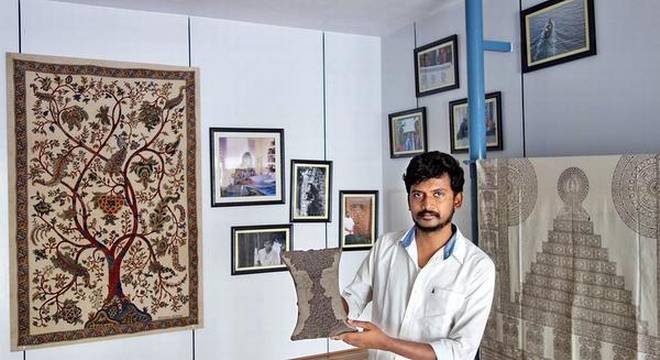
Varun Kumar of A.P. showcases the rich but dying art form in all its splendour
In the early 20th Century, the houses of Kalamkari craftsmen in Masulipatam lay silent with piles of unused wooden blocks covered in dust and cobwebs, as observed by Nelly Sethna, a scholar and authority on Kalamkari.
A century later, craftsmen’s houses look much the same, leaving the Indian textile art to die a slow death, owing to flourishing screen printing with chemical dyes which have replaced wooden blocks and natural dyes.
Finding no way to rescue the art form, 24-year-old Pitchuka Varun Kumar, grandson of Pitchuka Veera Subbaiah, has established a museum for Kalamkari art.
Mr. Subbaiah was one of the founders of Machilipatnam Kalamkari in Pedana (1970s) but it is now struggling for survival. Ironically, the art had gone into oblivion in Machilipatnam, from where it originated. In 2013, Machilipatnam Kalamkari got the Geographical Indication Registry tag.
The museum is a treasure trove of Kalamkari art. It has a collection of old wooden blocks with Persian, Dutch (Chintz), Mughal, traditional Indian and Buddhist motifs, fabrics, rare photographs and details of the process of natural dyeing, wooden block making, printing and washing in river Krishna. Tree of Life, a wall-hanger created with 212 wooden blocks by his team of artists, is also displayed at the museum.
“Hailing from a Kalamkari art family, I want our museum to offer a glimpse of the true art form and procedures involved in it to visitors and textile art lovers,” Mr. Kumar told The Hindu.
source: http://www.thehindu.com / The Hindu / Home> News> States> Andhra Pradesh / by T. Appala Naidu / Pedana – December 13th, 2017